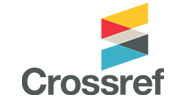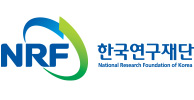1. INTRODUCTION
Mauremys reevesii (Reeves’ turtle), a member of the family Geoemydidae, has a geographic range that extends across Asia, including the Korean Peninsula, China, Taiwan, and Japan (GBIF 2023). This turtle was once commonly found in reservoirs, rivers, and lakes. However, its population is rapidly declining due to habitat destruction, overharvesting, and genetic pollution resulting from hybridization with other species (Lee 2010;Lovich et al. 2011;Baek et al. 2024). Moreover, the shell of M. reevesii, which contains musk, was historically used as a high-grade medicinal ingredient. Recently, its popularity as a pet has made it a target for poaching (Cheung and Dudgeon 2006;Chen et al. 2009). As a result, the International Union for Conservation of Nature (IUCN) Red List has assessed the status of M. reevesii as Endangered (EN) (Van Dijk 2011). In the Republic of Korea, M. reevesii has been designated as Natural Monument No. 453 and classified as an Endangered Wildlife Species Class II, ensuring its conservation through government management (NIBR 2011).
The known population sizes of M. reevesii have generally not exceeded 30 individuals per site, with two notable exceptions: 1,123 individuals recorded across Ishima Island, Japan (Takenaka and Hasegawa 2001), and 110 individuals documented by Yabe (1994) over a two-year period (Chen and Lue 2010;Lovich et al. 2011;Bu et al. 2022a). In the Republic of Korea, the number of turtles found in each location is typically less than 10 individuals (Lee 2010). Recently, the largest population of this species in the Republic of Korea was discovered in a small reservoir in Gyeongju-si, comprising approximately 20-30 individuals (Koo et al. 2019). Moreover, M. reevesii are highly elusive, making them difficult to detect during standard visual surveys. This characteristic poses challenges in accurately estimating their population size (Lovich et al. 2011;Kim et al. 2013).
In this study, we examined the population size and structure of M. reevesii in Geumho Reservoir, Jinjusi, the Republic of Korea. Our findings confirm the potential of Geumho Reservoir as a significant habitat for the largest known population of this endangered turtle species.
2. MATERIALS AND METHODS
The research on the development of capture techniques for invasive turtles, conducted by Ewha Womans University under the supervision of the Korea Environmental Industry & Technology Institute (KEITI), an affiliate of the Ministry of Environment, was carried out from 2021 to 2023 (KEITI 2024). Our study was conducted from March to October 2023.
2.1. Study area
The research area is Geumho Reservoir located in Geumsan-myeon, Jinju-si, Gyeongsangnam-do (35°12ʹ 29ʺN, 128°9ʹ13ʺE, WGS 84, 37 m a.s.l.), with an area of approximately 20 ha. This reservoir serves multiple purposes, including supplying agricultural water and providing recreational opportunities for local citizens. Recent studies have documented the presence of various turtle species in the reservoir, including the native M. reevesii and the invasive red-eared slider (Trachemys scripta elegans) (Yun et al. 2022).
2.2. Sampling target species
In this study, we utilized M. reevesii specimens that were collected during research on developing capture techniques for invasive turtles, rather than directly capturing them for this study (Kim et al. 2020). Within the reservoir, we selected two locations where numerous individuals were observed during visual surveys for invasive turtles (Fig. 1). At these sites, three types of capture devices (centipede net type, floating type, and falling type) developed by Ewha Womans University were installed (Appendix Fig. A1). The centipede net traps (45×30 cm, length 7-10 m) were installed around aquatic plants to capture individuals moving at the water surface and between aquatic plants near the shoreline. The floating traps (60×60×25 cm) are designed to be installed on open water surfaces with depth to capture basking and submerged individuals (patent number: 10-2507736). The falling traps (90×90×40 cm) are placed under natural structures like submerged trees to capture basking individuals. A total of 17 traps were installed, including 3 centipede net traps, 13 floating traps, and 1 falling trap, to capture turtles. From March 16 to October 31, 2023, we conducted weekly visits to the reservoir, totaling 35 weeks. During each visit, we recorded the species and size of turtles captured in each trap. The captured invasive turtles were collected, while M. reevesii were released back into the water. The installation of turtle traps and capture activities in this study were permitted by Jinju local government (official document: Environmental Management Division-39161), and Han River Basin Environmental Office (2022-02).
2.3. Population structure
The straight carapace length (SCL) of turtles was measured using a vernier caliper (Mitutoyo, Japan), and their body weight (BW) was measured using an electronic scale (WK-4CII, CAS, China). When determining the sex of freshwater turtles in the field, it is typically noted that males have longer tails than females (Lin et al. 2017;Yadollahvandmiandoab et al. 2018). Individuals were identified as males when the cloaca extended more than 2 cm beyond the edge of the carapace and had a long tail. Females were identified when the cloaca was close to the edge of the carapace. Smaller individuals whose sex could not be determined were recorded as juveniles (Rodrigues et al. 2014;Oh et al. 2015).
For individual marking, methods such as inserting small electronic chips (PIT tagging), attaching transmitters, or marking identification numbers by drilling holes in the marginal scutes of the carapace are used (Cagle 1939;Obbard and Brooks 1981;Gibbons and Andrews 2004;Nagle et al. 2017). In contrast, non-invasive methods include using the individual’s unique patterns or utilizing eco-friendly paint markers (Rowe et al. 2012;Unger and Santana 2019). In this study, we employed a non-invasive method based on Cagle’s proposed technique, using non-toxic paint markers (Permanent Marker, LYRA, Germany) to minimize the impact on the individuals. Numbers were assigned to the marginal scutes on the rear part of the carapace, and each individual’s identification number was marked on these scutes (Fig. 2).
2.4. Sexual size dimorphism and analysis
Freshwater turtles typically exhibit distinct sexual dimorphism (Berry and Shine 1980;Lovich and Gibbons 1990). To understand the population structure in Geumho Reservoir, we analyzed the sex ratio based on the number of individuals captured. Sexual size dimorphism was analyzed by comparing the SCL and BW of females and males using independent samples t-tests. Differences in recapture frequency between sexes were analyzed using a chi-square test, while the number of recaptures between sexes was compared using an independent samples t-test. All statistical analyses were performed using SPSS Statistics version 23.0 (IBM, USA).
2.5. Population size estimation
To estimate the population size of M. reevesii in Geumho Reservoir, we employed the Schnabel method, which uses capture-recapture data to estimate potential population size (Schnabel 1938). The estimation formula is as follows:
N: Estimated population size; Ct: Total number of individuals caught at time t; Mt: Number of marked individuals before sampling at time t; Rt: Number of recaptured animals at time t.
3. RESULTS
3.1. Population structure
During the study period, we identified a total of 433 turtles, comprising 180 females, 235 males, and 18 juveniles (Fig. 3). The overall sex ratio of females to males was 1 : 1.3. Female turtles (n=180) had a mean SCL of 98.7±27.5 mm (range: 59.8-199.3 mm) and a mean BW of 179.0±167.3 g (range: 37.0-1,133.0 g). Male turtles (n=235) had a mean SCL of 97.2±24.4 mm (range: 58.3-167.9 mm) and a mean BW of 150.8±102.5 g (range: 35.0-515.0 g). Juveniles (n=18) measured 52.4±6.1 mm (range=34.8-59.4 mm) in SCL and 26.8±8.0 g (range=7.0-39.0 g) in BW. There was no significant difference in SCL between females and males (independent samples t-test, t=0.552, df=415, p= 0.581). However, females were significantly heavier than males in BW (t=2.119, df=415, p=0.047).
3.2. Rate of recapture
During the study period, M. reevesii were recaptured a total of 191 times. Among these recaptures, 65 individuals (15.0%) were recaptured only once (Fig. 4). The recapture frequency decreased significantly to less than half for the second recapture (n=13) and further declined for the fourth recapture (n=3). The recapture rate by sex was higher for males at 28.9% (n=68/235) compared to females at 17.2% (n=31/180) (chi-square test, χ2=13.828, df=1, p<0.0001). The average number of recaptures was also higher for males, at 2.1±2.0 times (range: 1 to 11), compared to females at 1.5±0.9 times (range: 1 to 4). However, this difference was not statistically significant (t=1.962, df=96.883, p=0.053).
3.3. Population size estimation
Based on the capture-recapture results over a total of 35 weeks, the population size of M. reevesii inhabiting Geumho Reservoir was estimated to be approximately 891.4 individuals.
4. DISCUSSION
Our study showed that the Geumho Reservoir is a habitat for the largest population of M. reevesii in the Republic of Korea. During the study period, at least 433 individuals were identified, which is more than 20 times the previous record for the largest population of this species in the Republic of Korea (Koo et al. 2019). Moreover, compared to international cases, except for the record of 1,123 individuals by Takenaka and Hasegawa (2001) (with the number of individuals per site unknown), the population in Geumho Reservoir is several to several dozen times larger (Yabe 1994;Suzuki et al. 2011;Bu et al. 2022a). Since the capture traps were not set up to cover the entire area of Geumho Reservoir, it is estimated that the actual number of individuals is likely to be much higher. In other words, Geumho Reservoir may be the largest habitat for M. reevesii not only in the Republic of Korea but also globally as a single site. Although further research is needed, these results indicate that Geumho Reservoir, a habitat for the globally endangered M. reevesii, should be designated as a specially protected area and managed at the national level.
The recapture rate is a crucial variable for estimating population size (Schnabel 1938;Jolly 1965;Seber 1965;Begon 1979). In the case of turtles, the recapture rate typically does not exceed 30%, even in long-term studies (Jones and Hartfield 1995;Koch et al. 2007). For example, in the case of the wood turtle (Glyptemys insculpta) inhabiting Pennsylvania, the average recapture rate per individual was less than three over a research period of more than 24 years (Lovich et al. 1990). In contrast, this study recorded a recapture rate close to 44% over approximately eight months, with one individual being recaptured 11 times, which accounts for about 30% of the total 35 capture trials. The core home range of M. reevesii averages 2.9 ha, which is narrower than that of the red-eared sliders (2.8-7.6 ha) and its close relative, Iberian pond turtle, Mauremys leprosa (2.2-4.07 ha) (Pérez-Santigosa et al. 2013;Song et al. 2014;Bu et al. 2023). It is likely that M. reevesii has a narrow home range and therefore did not stray far from their habitat after release, which may have contributed to the high recapture rate. While further research on habitat preference is needed, if this hypothesis is correct, these characteristics may render them highly vulnerable to illegal poaching and habitat disturbance.
There was no clear sexual size dimorphism observed between the sizes of females and males inhabiting Geumho Reservoir. Typically, turtles exhibit female-biased sexual size dimorphism, a phenomenon that is also pronounced in M. reevesii (Berry and Shine 1980;Yabe 1994;Noda and Kamata 2004;Lovich et al. 2011;Bu et al. 2022a). In contrast, we found that sexual dimorphism in SCL was not pronounced between females and males. Furthermore, the average SCL of M. reevesii in Geumho Reservoir, measuring 98.7 mm, was significantly smaller than the average SCL of 138.2 mm recorded for females in the Republic of Korea and also showed substantial differences from sizes reported in previous studies (Yabe 1994;Noda and Kamata 2004;Bu et al. 2022b). In the Republic of Korea, prior to the importation of red-eared sliders in the 2000s, M. reevesii was imported from China and released into rivers and reservoirs nationwide (Oh and Hong 2007). It is plausible that the population in Geumho Reservoir was established by turtles introduced during this period. While M. reevesii endemic to the Republic of Korea do not differ taxonomically from the imported Chinese turtles, they possess a unique haplotype specific to the Republic of Korea (Oh et al. 2017). In other words, if the M. reevesii are from China, hybridization with native individuals may occur, potentially leading to a long-term reduction in the unique genetic makeup of the Korean population. Therefore, to protect the unique genetic material of M. reevesii of the Republic of Korea, it is necessary to conduct phylogenetic studies on the turtles in Geumho Reservoir to determine their origin.
The sex ratio of M. reevesii is reported to be 1 : 1 in individuals under six years old; however, it is generally observed that the proportion of males increases with age (Lovich et al. 2011). In Japan, on Ishima Island, the ratio of males to females has been found to reach as high as 4 : 1 (Takenaka and Hasegawa 2001;Lovich et al. 2011). Several factors have been identified as contributing to the male-biased ratio, with growth rates and female mortality rates being the primary ones (Gibbons 1990). Additionally, roadkill resulting from the high mobility of females also affects the sex ratio (Aresco 2005). The sex ratio of M. reevesii confirmed in our study was slightly male-biased at 1.3 : 1. Based on previous cases, this may support the notion that the population in Geumho Reservoir is not a well-established group over a sufficiently long period. Since the proportion of males does not always increase over time, longterm research is necessary to accurately describe the population structure.
5. CONCLUSION
Although this study was conducted on the turtles that were incidentally captured, it provided valuable insights into the population size of this endangered species. In particular, we confirmed the possibility on the largest population of M. reevesii not previously observed in any other country, including the Republic of Korea. M. reevesii is a freshwater turtle that is rapidly declining not only in the Republic of Korea but also globally. Therefore, it is crucial to swiftly develop and implement comprehensive protection measures for this species. Moreover, management strategies for Geumho Reservoir should be established to preserve the habitats and populations of this endangered species, which holds significant importance both nationally and globally.




















